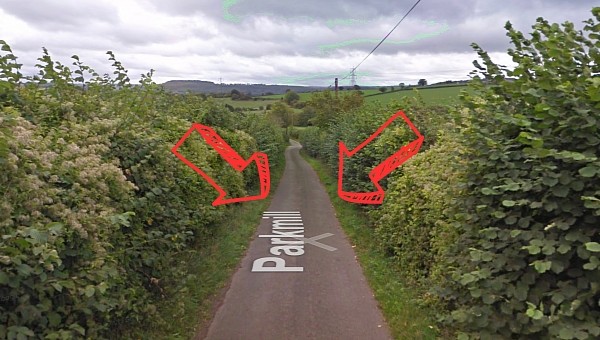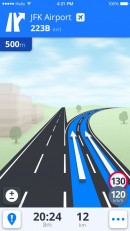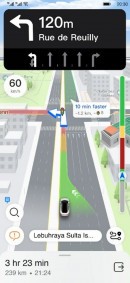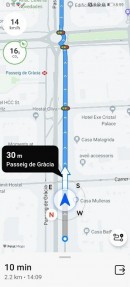Authorities in Herefordshire, England plan to request Google to remove a road from Google Maps because the navigation app keeps sending heavy traffic on it.
The tiny country lanes between Ruxton and Llangarron aren’t suitable for heavy traffic, local authorities say. Google Maps typically sends vehicles on this route as an alternative to more crowded alternatives. Because of light traffic, Google Maps sees the country road as a solution to reach a destination faster, eventually directing cars to the region.
The local officials aren’t pleased with the increase in traffic volume and say that reaching out to Google to “remove the road” from Google Maps is the only solution. As such, a counselor will be in contact with the search giant in order to make sure Google Maps sends motorists on other routes.
Removing a road from Google Maps is not possible unless the authorities close it. Google could theoretically train its routing engine to avoid the road, but this defeats the purpose of Google Maps. The navigation app was designed from the very beginning to find the fastest route to a destination.
The problem on small country roads typically stems from truck drivers using Google Maps.
The application is only supposed to be used by passenger cars, as a dedicated truck navigation mode is not offered. As a result, Google Maps doesn’t take into account the vehicle dimensions or the cargo size, eventually sending lorries to roads where they don’t normally fit.
These vehicles occasionally get stuck on such roads, calling for assistance and causing major traffic disruptions in the region.
Truck navigation has long been a top feature request for Google Maps. Google, however, has so far ignored the feedback on this front, focusing on the standard navigation component in Google Maps.
The need for truck navigation software has been addressed by other companies. Sygic is a leading name in this regard, as the firm has developed navigation software specifically aimed at larger vehicles, including lorries and RVs. As such, the application only generates routes according to the vehicle dimensions and the cargo size. Additionally, drivers are provided with more information, including parking lots and camping grounds.
Google hasn’t yet commented on the road removal request. The company typically works with authorities on addressing such problems. This time, however, local officials could resolve the heavy traffic concern much easier, all by enforcing restrictions that would prevent certain vehicles from using the road.
For example, by blocking lorries from using this specific route, only small passenger vehicles would end up on the small road. Of course, this simple idea assumes lorry drivers keep an eye on the traffic signs, and as history has taught us, this doesn’t always happen.
The local officials aren’t pleased with the increase in traffic volume and say that reaching out to Google to “remove the road” from Google Maps is the only solution. As such, a counselor will be in contact with the search giant in order to make sure Google Maps sends motorists on other routes.
Removing a road from Google Maps is not possible unless the authorities close it. Google could theoretically train its routing engine to avoid the road, but this defeats the purpose of Google Maps. The navigation app was designed from the very beginning to find the fastest route to a destination.
The problem on small country roads typically stems from truck drivers using Google Maps.
The application is only supposed to be used by passenger cars, as a dedicated truck navigation mode is not offered. As a result, Google Maps doesn’t take into account the vehicle dimensions or the cargo size, eventually sending lorries to roads where they don’t normally fit.
These vehicles occasionally get stuck on such roads, calling for assistance and causing major traffic disruptions in the region.
Truck navigation has long been a top feature request for Google Maps. Google, however, has so far ignored the feedback on this front, focusing on the standard navigation component in Google Maps.
The need for truck navigation software has been addressed by other companies. Sygic is a leading name in this regard, as the firm has developed navigation software specifically aimed at larger vehicles, including lorries and RVs. As such, the application only generates routes according to the vehicle dimensions and the cargo size. Additionally, drivers are provided with more information, including parking lots and camping grounds.
Google hasn’t yet commented on the road removal request. The company typically works with authorities on addressing such problems. This time, however, local officials could resolve the heavy traffic concern much easier, all by enforcing restrictions that would prevent certain vehicles from using the road.
For example, by blocking lorries from using this specific route, only small passenger vehicles would end up on the small road. Of course, this simple idea assumes lorry drivers keep an eye on the traffic signs, and as history has taught us, this doesn’t always happen.









